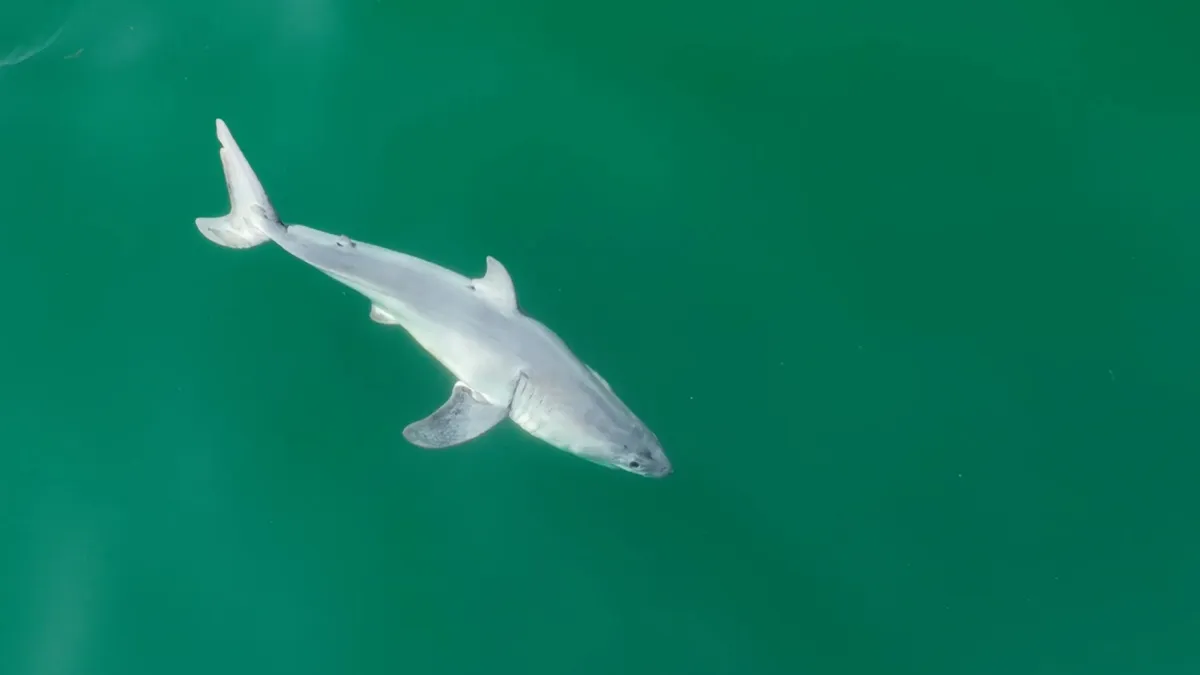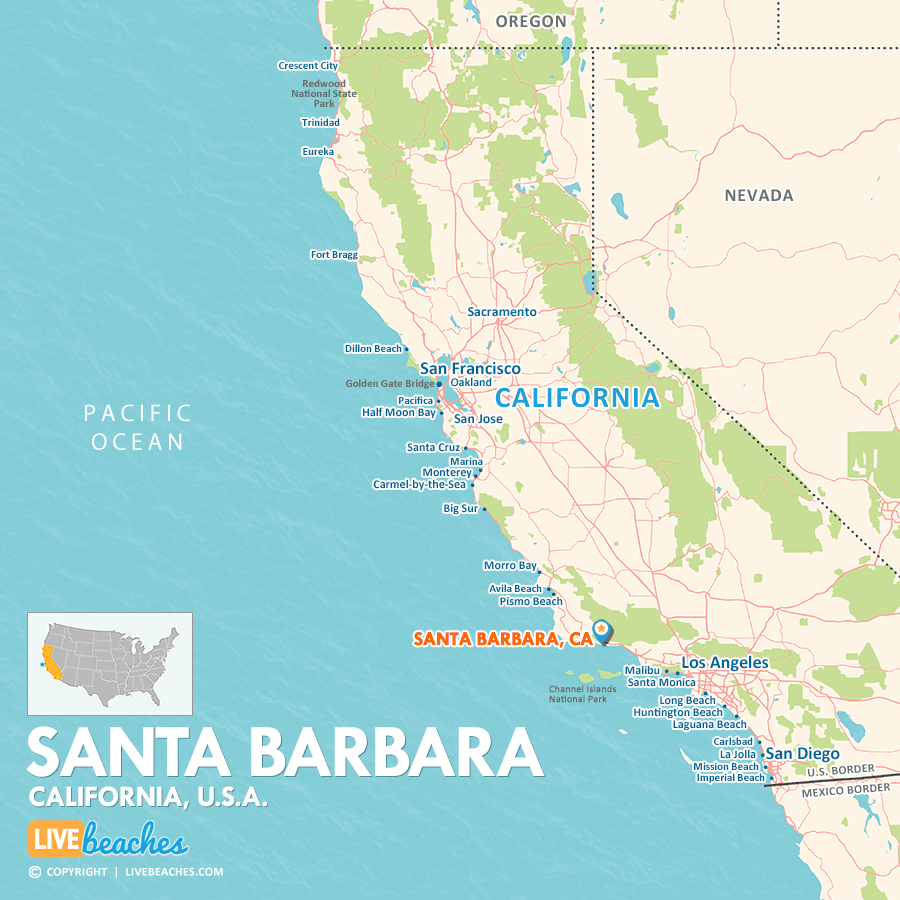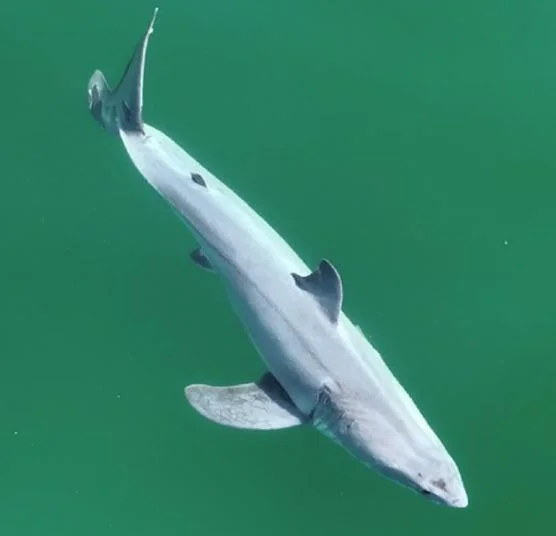When most people think of a shark, the great white shark first comes to mind. Although this is by far the most well-known species of shark, a newborn has never been recorded by scientists… until now. Filmmaker Carlos Guana and Organismal Biologist Phillip Sternes were using a drone to view great whites off the coast of Santa Barbara in 2023 when they noticed something abnormal. A smaller great white, about 5 feet in length, with a white film coming off its tail, was swimming among a group of adults. Since this has never been recorded before, Guana and Sternes speculated that this film was either an unrecorded skin condition or uterine milk, which would mean that the shark was just born.
Map of California Coast with Santa Barbara marked in red (https://www.livebeaches.com/beaches/santa-barbara-california/map-of-santa-barbara-california/)
So much about great white shark reproduction is unknown, and that includes their spawning grounds. Although there is no way to know for sure what the white film was, a shark biologist with the Massachusetts Division of Marine Fisheries, Greg Skomal, explained that with the facts presented, the shark is most likely a newborn. He says that “The shark’s coloration, shape, size, as well as the appearance of the milky white fluid all suggest it’s extremely young.” The location where the shark was recorded was also previously speculated to be a breeding ground for great whites, which also points to the shark being a newborn. If this is the case, this would be a huge breakthrough for scientists studying the reproduction of great whites. Since this shark was found in a potential breeding ground, this could mean that great whites tend to stay around their breeding ground longer than scientists originally thought. The shark was also near a group of adults, which could also mean that newborn sharks not only stay around the place they were born, but also around their mother, which scientists did not believe to be the case. Confirming that the location off the coast of Santa Barbara, where the baby great white was found, is a breeding ground would also be a massive step in the right direction to open future research and learn more about the reproduction of great whites.
Before this discovery, scientists hadn’t found a location that they could confirm was a breeding ground. Now that they have a general location, they can put more researchers in that area more frequently, instead of making guesses on where the breeding grounds will most likely be. Over time, this will exponentially increase the amount of knowledge we have about great white sharks’ breeding habits and the behavior of newborns after birth. This discovery is especially important because, according to the article, “Great white sharks are listed as vulnerable to extinction by the International Union for Conservation of Nature.” Since their population is also thought to be decreasing, finding out about their breeding habits could significantly help conserve this species. With more information on the topic, scientists could even learn how to breed great whites in captivity, which has never been successfully done before. This could help them rebuild the population in the wild before it is too late.
Image of the speculated newborn great white (https://www.livescience.com/animals/sharks/one-of-the-holy-grails-of-shark-science-watch-1st-ever-footage-of-a-pure-white-newborn-great-white-shark)


